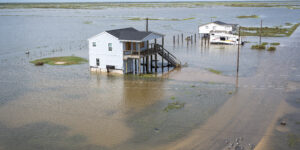Cyclist fatalities reached a multi-decade high in 2021.
According to a recent report from the National Highway Traffic Safety Administration, 966 pedal cyclists were killed in traffic crashes in 2021. That marked the most deaths in one year since 1975. The latest number marks a back-to-back annual increase in national cycling deaths.
In 2020, 948 cyclists were killed on roadways, and in 2019, that number was 858.
“Traffic fatality data in the United States is trending in the wrong direction,” Ken McLeod, policy director of The League of American Bicyclists, wrote in an email. “Especially for people outside of vehicles, the last decade has seen consistent increases in traffic deaths leading to multi-decade highs.”
Continuing Trend
NHTSA fatality data paired with U.S. Census Bureau data shows there were 2.7 fatal bicycle crashes on average for every million U.S. residents between 2017-2021. That was up 5 percent from 2012-2016. Cycling fatalities occurred in every state in 2021, and more than half of the total deaths occurred in the top five states of Florida, California, Texas, New York and Arizona.
Pedal cyclist fatalities in urban areas have increased by 62 percent since 2012; meanwhile, they decreased by 38 percent in rural areas. The overall proportion of people killed “outside the vehicle” (motorcyclists, pedestrians, pedal cyclists and other nonoccupants) has increased from a low of 20 percent in 1996 to a high of 34 percent in 2021.
Cycling fatalities made up about 2.2 percent of total traffic fatalities in 2021. The NHTSA also reports the number of pedal cyclists injured in traffic crashes reached 41,615 in 2021 – a 7 percent increase from 2020.
Go Deeper
According to the NHTSA, 42,939 people were killed in motor vehicle traffic crashes on U.S. roadways during 2021 – the largest number of fatalities since 2005. That figure also represents a 10 percent increase from the 39,007 fatalities in 2020, meaning 3,932 more people were killed in traffic crashes in 2021.
Both pedestrian and motorcyclist fatalities have been rapidly rising in recent years.
“While the trends are disturbing, we should not be discouraged into thinking that traffic deaths are inevitable,” McLeod wrote in an email. “Most other wealthy countries do not experience anywhere close to the rate of traffic deaths experienced by Americans. Reducing traffic deaths is both possible and necessary and will take systematic investments to create safer places to bike, walk, and drive that prioritize safety over speed.”
Read the full report on the NHTSA website.





















 Women Are Now Leaning Out in the Workplace
Women Are Now Leaning Out in the Workplace  Acrisure to Buy MGA Vave From Canopius
Acrisure to Buy MGA Vave From Canopius  Berkshire Hathaway Announces Leadership Appointments: New CEO at GEICO
Berkshire Hathaway Announces Leadership Appointments: New CEO at GEICO  How Carriers Are Pairing AI and Process Discipline to Drive Subrogation Outcomes
How Carriers Are Pairing AI and Process Discipline to Drive Subrogation Outcomes 




